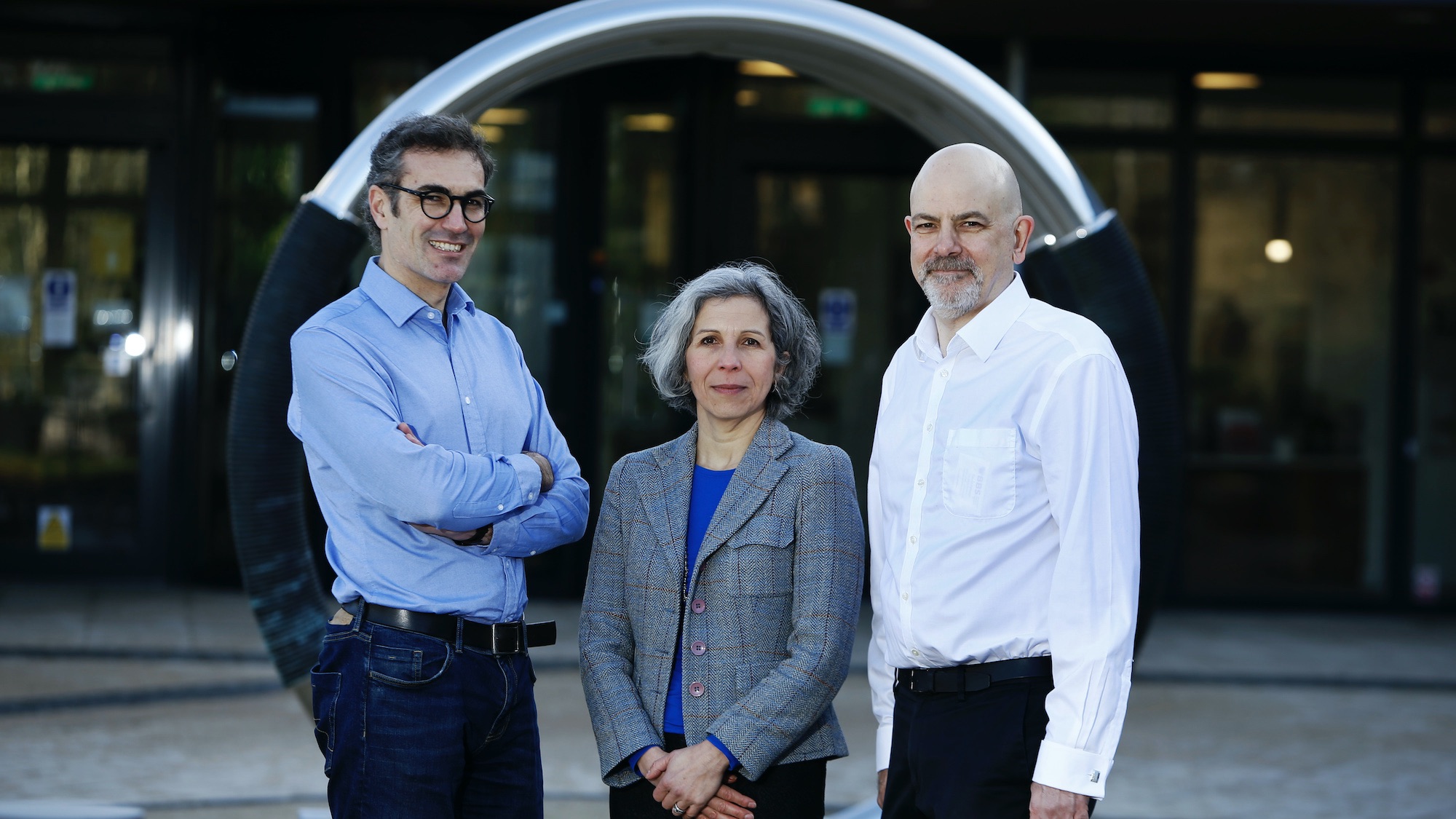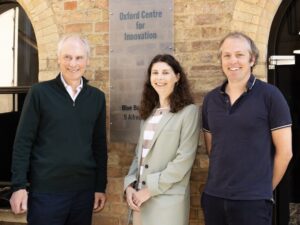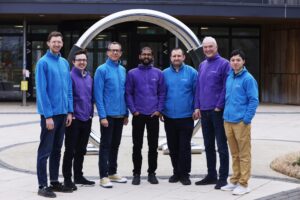Five minutes with Simon Jones, CEO of Helio Display Materials
May 30, 2022

Helio Display Materials moved into the Wood Centre for Innovation in April with a mission to revolutionise television screen performance with its new technology that makes colours more vivid while reducing power consumption.
The breakthrough is based on pioneering research at the University of Oxford led by Professor Henry Snaith into the properties of perovskites, which are materials that exhibit a very specific crystal structure. Certain perovskite compositions are extremely efficient optical semiconductors and this is leading to their dramatic uptake in both light absorbing and light emitting applications.
Helio Display Materials was founded to address applications of perovskites in displays where their luminescent qualities are used to emit very pure primary colours. The red, green and blue in displays sub-pixels are usually made with a colour filter so, for example, in the red sub-pixel all other the colours are filtered out and lost. But by using a colour conversion approach, the other colours are converted by the perovskite into red light which is much more energy efficient. As well as converting light from one colour to another very efficiently, perovskites emit a very narrow peak wavelength of light which enables a wider range of colours (i.e. colour gamut) to be reproduced on the screen.
On first discovering the amazing light emitting properties of perovskites, Professor Snaith decided to approach his former tutor at Cambridge University, Professor Sir Richard Friend, who as a founding father of polymer OLED displays had already commercialised important display materials technologies through Cambridge Display Technology. Together, they launched Helio, the first joint spin out from Oxford and Cambridge.
Helio CEO, Simon Jones (right in photo above), explains that the business is aiming to offer manufacturers a way of producing large screens at higher performance and lower cost without any need to significantly change their production techniques.
“We’re going to allow companies to produce higher value screens using their existing manufacturing infrastructure which will create huge value for Helio’s uniquely enabling materials,” he says.
“That value comes from a superior viewing experience combined with much lower power consumption which has always been important for mobile devices but is now increasingly important for mains powered devices like large TVs.”
To understand how the technology works, Simon Jones reveals people first need to think of the limitations of today’s screen technology.
“If you hold up a tv screen in front of a real-world scene, it doesn’t look the same. This is due to a lack of colour range, brightness and contrast,” he says.
“We are helping manufacturers get closer to natural world performance by incorporating our perovskite materials into the sub-pixel architecture of the screen.”
This better performance comes partly from the natural ability of perovskites to convert light from one colour to another in a very thin film, which is extremely important for optical design and manufacturing cost reasons. For example, Helio’s materials can convert 99.9% of incident blue light into green light in a film of less than 5 microns. The result is brighter more vivid colours displayed on screens that consume less power. At home, the main advantage will be a far better viewing experience. This will also be the case in commercial uses, with the added attraction of considerable savings in running costs.
Shortly before moving into the Wood Centre for Innovation in Headington, Helio announced a successful Series A finance round which raised $4.75m. Longwall Venture Partners and BGF lead the round. Simon Jones says the funding empowers the business to scale up its capacity to design products and engage with partners in the display supply chain.
The successful investment round has also enabled the business to expand its team with key new hires, including Dr Valérie Berryman-Bousquet as VP Engineering. Valérie brings more than twenty years of experience heading up R&D into new screen technologies, primarily at Sharp. Prof. Henry Snaith has also just been appointed as Chief Scientific Officer.
The recent additions to the team bring the company’s head count to ten but it has plans to carry on recruiting throughout the rest of the year as it settles into its new office and lab. According to Simon Jones, the Wood Centre for Innovation was chosen because of its flexible and proactive approach to meeting Helio’s requirements.
“We were really impressed by how helpful the Wood Centre management team were in listening to our specialist requirements,” he says.
“We had some very detailed wet lab requirements, which we might have been able to get elsewhere, but the Wood Centre team were prepared to go the extra mile to deliver a facility that really is a perfect fit for Helio.”
To find out more about Helio Display Materials, including current vacancies, check out their website here. Learn more about perovskites in display applications by watching their video here.
*Helio are a company to watch and in March 2023 were recently named as a cofinitive #21toWatch 2023 award winner. This campaign celebrates new entities at the cutting-edge of innovation and entrepreneurship across Cambridge and the East of England.
To find out more about our innovation centre, follow the links for the Wood Centre for Innovation and its sister centre, the Oxford Centre for Innovation
*This article was updated in March 2023 to include their award.



